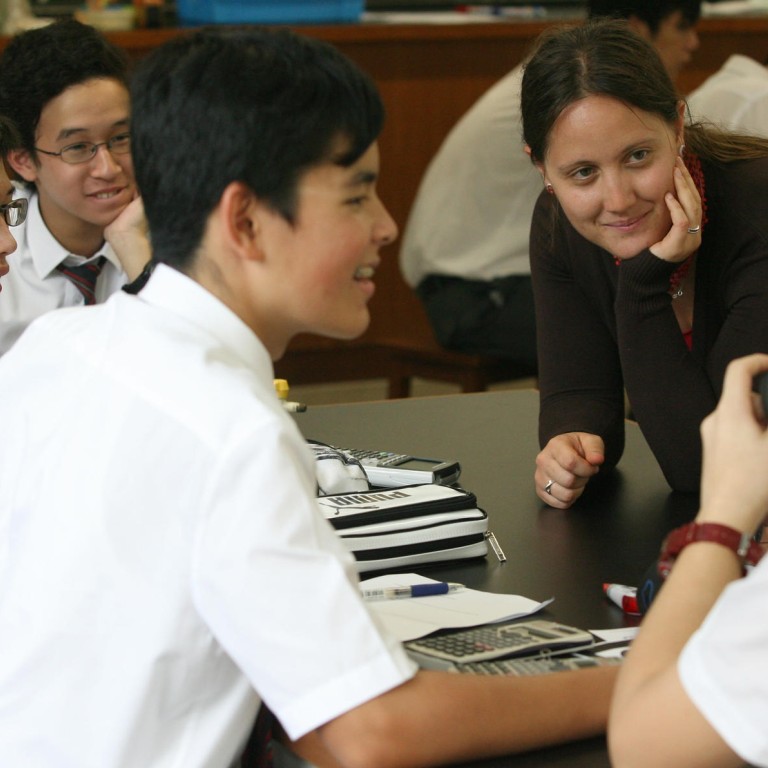
The science of knowledge helps parents teach children
It has been a privilege to facilitate the learning of exceptional young people in my teaching career. I have taught students who have achieved perfect scores for AP (advance placement) and International Baccalaureate, as well as national rankings in their IGCSE biology exams. These students have done themselves, their families and their schools proud.
But I consider my success stories to be the students who have struggled with biology and who I have helped reach the finish line. Without doubt, the most rewarding experience as a parent and educator is to see students learn and grow.
Which brings us to the question: how do students learn? A brief overview of the key ideas that form the basis of learning and teaching can guide parents on how they can help improve their child's education.
Piaget recognised that students construct knowledge based on their experiences rather than receiving knowledge from the teacher, and that how they do so is related to their biological, physical and mental stage of development. So simply "attending" school or enrolling in an after-school class does not imply that learning will take place.
It is important that students are engaged in their own learning process. When they make their own notes from teacher handouts and class notes, and do their own reading, they gain an understanding of the subject. That's how they learn.
Russian scientist Lev Vygotsky expanded on Piaget's developmental theory of cognitive (reasoning) abilities. He suggested students best learn subjects that are just beyond their range of existing experience, with help from a teacher or a peer to bridge the distance from what they know or can do independently, and that for which they require assistance. He described this as moving students through their zone of proximal development (ZPD).
This seminal idea defines our role as parents and educators. Irrespective of a student's IQ or ability, every student needs to be moved through their own ZPD so that they learn new ideas and skills.
Students learn by constructing knowledge from experience, building on previous knowledge, and organising their own learning.
Here are some key ideas from the Stanford school of education about how students learn best:
- Students learn by making associations.
- Since learning is a process of drawing connections between what is already known or understood, and new information, having prior knowledge is important to the learning process. So it is important that students memorise key principles and facts in subject areas, so that they can build new information on it, make sense of the material and easily make connections between ideas.
- Learning is influenced by cultural and social contexts. The values students have about what is worth learning, the manner in which they communicate, and their understanding of their own roles in society, are greatly influenced by their experiences at home and the community they belong to. A disconnect between experiences at home and school affects learning.
- All students have different learning styles.
Developmental psychologist Howard Gardner postulated the theory of multiple intelligences, which states that different learning styles stem from the processing differences that influence how students handle visual, aural, or kinesthetic information.
US educational scholar David Kolb's experiential learning theory identifies four modes in the learning cycle: doing something (concrete experimentation), thinking about it (reflection), talking with others and applying what we already know to the situation (abstract conceptualisation) and doing something new or doing the same thing in a more sophisticated way based on our learning (active experimentation).
Students also learn better in a positive learning environment. Learning involves making sense of stimuli. Environments rich in stimuli, feedback and reinforcement can stimulate or undermine student effort. Communicating clear instructions and expectations as well as providing role models enables students to learn better.
Students learn best when they reflect on their own learning and are able to manage their feelings
Metacognition - the ability to think about and monitor one's own learning - enables students to manage their learning process.
Good metacognitive thinkers are also good intentional learners, as they are able to redirect the frustration that normally arises when things are confusing, or not initially productive, into further learning.
Students who are fearful, anxious, depressed or distracted cannot focus enough to process information and learn. Positive emotions, confidence and a willingness by teachers to exert effort will help them think, undertake a learning task and process new knowledge.
Anjali Hazari teaches IB and IGCSE biology at the French International School


